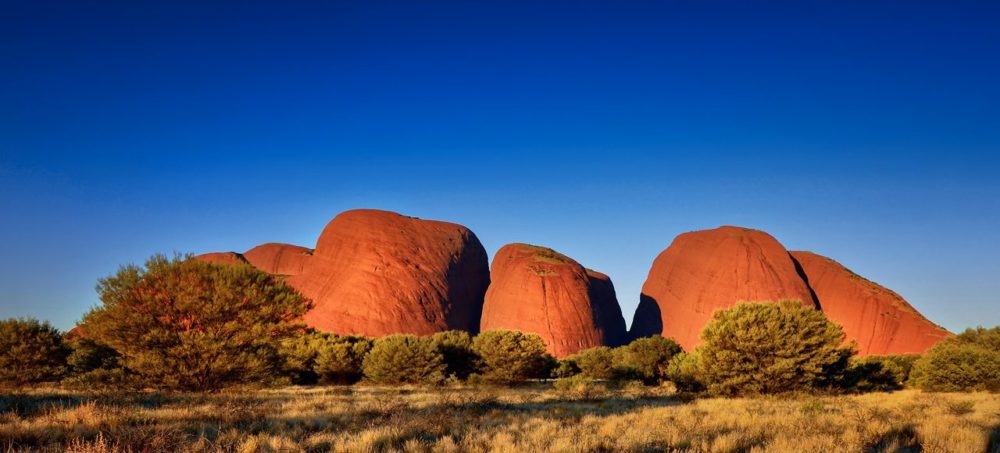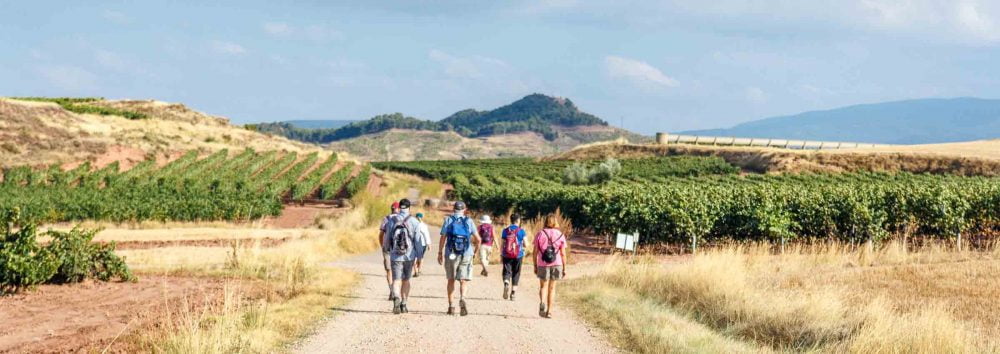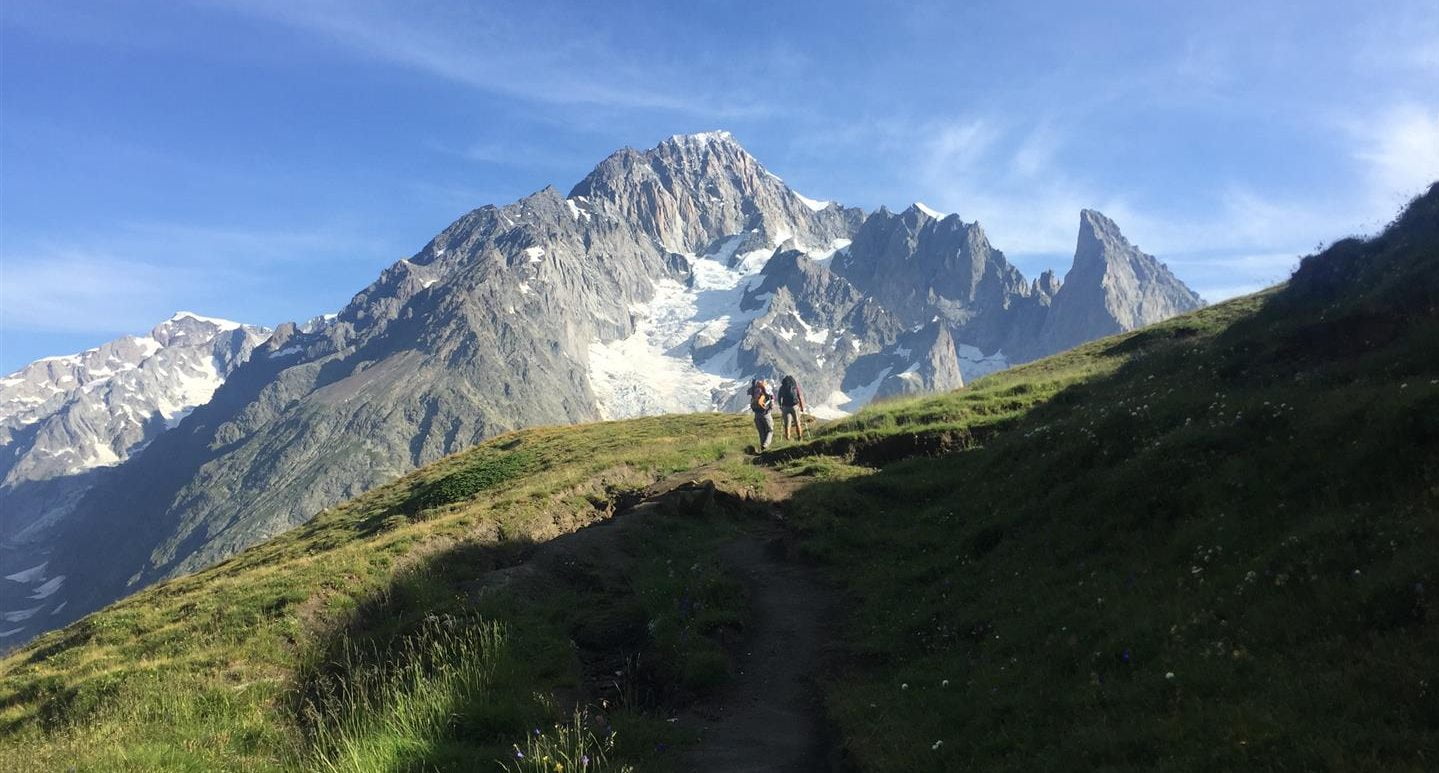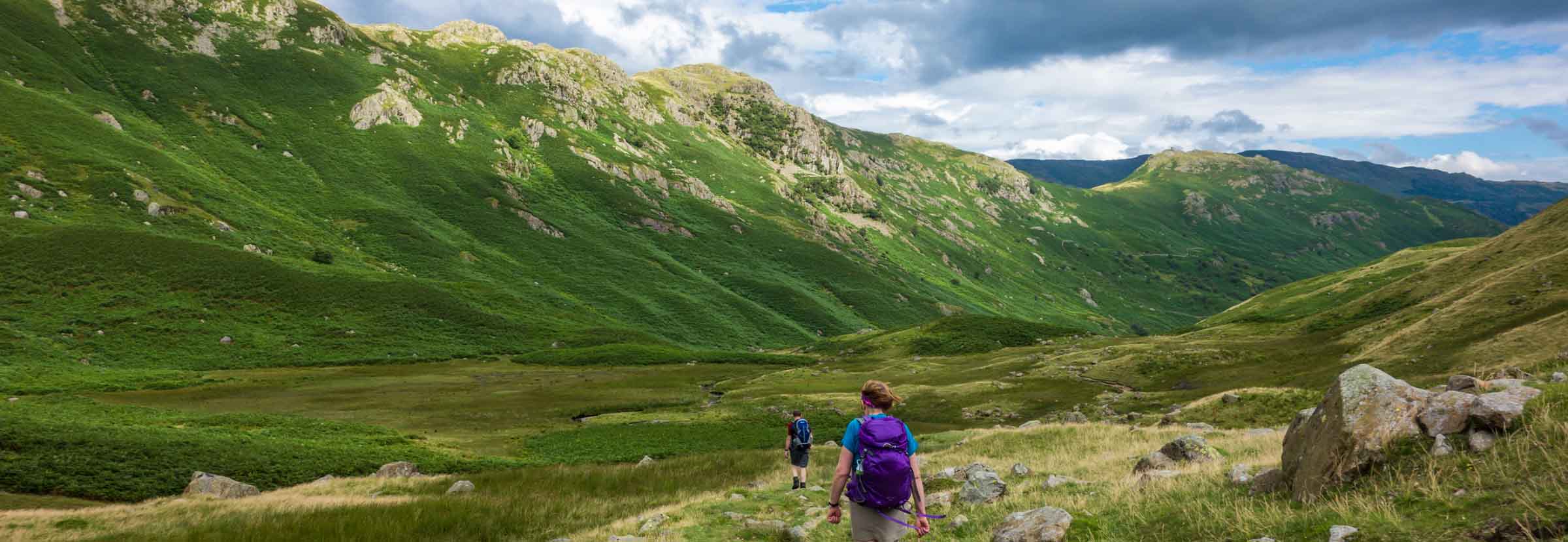
The Evolution of Walking Holidays
If you go back far enough, the thought of going for a walking holiday would have seemed absurd. And if you go back even further, holidays just wouldn’t have been part of the picture at all.
And yet, you could easily argue that walking has defined us as a species. Certainly walking on two feet anyway. Only humans, birds, and some apes (on the odd occasion) practice Bipedalism, and the ability to walk may even have led to our capacity to think, adapt and evolve into who we are today.
The first walking holiday
The theory goes, we came down from the trees all those years ago for climatic reasons, looking for food perhaps – and then, it was easier to cross longer distances on two feet. This freed our hands up to make tools, and the very act of doing so encouraged our brains to grow and develop.
It’s generally accepted this happened about 200,000 years ago in East Africa, and as soon as we could walk, we were off. Wandering around the planet, exploring further and further until we’d reached almost every corner of the earth.
In fact, we’ve been a nomadic species for about 95% of our existence. Walking from place to place looking for food, shelter & better weather, until about 10,000 years ago when some of us just stopped and settled down. Villages became towns, and then cities.
Farming, as opposed to foraging, became the norm and eventually at some point, someone probably woke up one day and decided to go for a walk in the hills, just for the sheer enjoyment of being out in nature. Away from other people. The noise of the markets and the smell of the sewers.
And right then, the first ‘walking holiday’ began.
Of course, we have no idea if this is true or not, however, there’s no point in having these big brains if we don’t put them to use now and again…
But the first walking holiday must have happened sometime. And while it might be a number of years before it was labelled as such, we’re going to explore the steps that took us from walking to actually ‘get somewhere’, to walking as a holiday, and where on earth we might be going in the future…
Going Walkabout
Before we get going, however, another contender for the first ‘walking holiday’ would have to come from the Aborigines, who, being the first people to leave Africa are actually the first great wanderers of humanity. And this impulse to walk, to explore, was obviously embedded in their nature as it features even today.
Between the ages of about 10 – 16, young men participate in the coming of age tradition of Walkabout. Where initiates head off into the bush for up to six months, covering 1,000 kilometres or so, and returning having had a spiritual awakening of sorts.
Sounds a bit like a walking holiday to me. I’d give my left arm to go on a six month walking trip – although, perhaps, not in the outback for quite that length of time.

A Roman holiday
The concept of a holiday as we know it today, however, really began with the Romans. The first civilisation to achieve some semblance of stability, along with an ever-expanding Empire and decent roads to go with it – the perfect conditions for a holiday, so it seems.
Well-to-do Romans would take off for months on a trip around the highlights of the Empire. Starting at the lost city of Troy, on the northwest coast of today’s Turkey, they’d travel to the Acropolis in Athens, the fallen Colossus at Rhodes, the Pyramids of Egypt and finally a cruise down the Nile.
And, what’s considered the first-ever guidebook was written for this very journey.
‘Description of Greece’ is a series of ten books, penned around 150 A.D. by Pausanius, a Greek author, traveller and geographer – and his works are such an insight into that world, they’ve been used to identify ruins and ancient streets.
“… without it, we would be hard put to identify the remains of the buildings that have been found with those known from other ancient sources to have existed in the Agora.” Eugene Vanderpool, American Archaeologist.
So it looks as if the ancient Romans were the first to introduce the concept of a ‘holiday’, although, we’re pretty sure the wealthy citizens who could afford such a trip, were not going by shanks’ pony. They would have been carried along in chariots or carts no doubt.

And so, to the Pilgrimages
Along with cities and Empires came organised religion – and Pilgrimages, which were pretty much always completed on foot. A walk to a holy site in celebration of faith and devotion to god, where the journey itself was almost as important as the destination.
Yet again, sounds a bit like a walking holiday to me.
The earliest Pilgrimage on record began around the 4th Century, established by Emperor Constantine’s mother – St Helena – and involved walking from wherever you happened to be – to Rome. Hence the expression ‘all roads lead to Rome’.
Most religions have a sacred route, or two, and their popularity has risen and fallen over the years. For example, in 2016, 20 million people converged on Karbala in Iraq, as part of the Arba’een Pilgrimage – making it the largest pilgrimage in the world, ever. And yet it was banned completely during Saddam Hussein’s reign, and only revived after his death in 2003.
There are two Pilgrimages in particular, that have maintained slightly more consistency though. The Kumano Kodo in Japan, which is a mystical walk around mist-shrouded mountains, and the Camino de Santiago, a series of routes converging on Santiago de Compostela, where Jesus’ disciple, St James, is buried.
Both have been recognised by UNESCO, listed as World Heritage Pilgrimage Walks, and interestingly – both have evolved away from being just ‘religious’ in their nature.
“The current situation of crisis in the world, and personal searching, leads oneself to get out on the pilgrimage route, to try to find oneself, and transcend, making sense of our existence.” Segundo Perez Lopez, Dean of the Cathedral of Santiago de Compostela
More of a focus on spirituality, than adherence to a specific religion – and when we look at the sort of walking holidays people go on today, the Kumano and Camino are both very much part of the picture.

But, was it a holiday…?
OK, so the Pilgrimages were actually walked, most of the time, but were they ‘holidays’ though? Were they undertaken by some, perhaps, under a burden of expectation and responsibility? Or, was there some aspect of enjoyment and leisure involved in the journey – whatever their reasons for setting off…
Once again we can look to literature, to give us a clue.
Published at the end of the 14th Century, Chaucer’s’ ‘Canterbury Tales’ follows a fictional group of pilgrims having a story telling competition throughout their journey, and the stories talk to the fact that humour, and a concern for worldly possessions was more important than any religious pursuits.
So if we assume that fiction is generally a reflection of the reality of the day, then it’s fair to say that, yes – walking a pilgrimage by this point, at least for some – was enjoyable, and kind of a holiday.
Only for the few
For the next couple of centuries the only evolution of ‘holidays’ appears to be long trips taken by royalty, and the well off.
Between the 16th and the 18th Century, wealthy young men would often embark on what became known as the ‘Grand Tour’. A cultural trip around European cities where they’d become ‘worldly wise’ and return to society with elevated status.
Not so much walking involved, but another stage in the evolution for sure. And the Grand Tour can easily be seen as a precursor to Backpacking, the much democratised version of a Grand Tour, and a lot more fun I’d suggest!
So we’ve had first walks, pilgrimages, voyages and guidebooks – what’s next..?
The first guided walk
A walk up a mountain is still a walk, and so – a contender for the first guided walk ever, would have to be the second ascent of Mont Blanc in 1786.
Obsessed with the mountain but unable to reach the top, Swiss scientist and adventurer, Horace Bénédict de Saussure, offered a prize for anyone who could attain the summit. And to claim the prize, the winner would then have to guide Saussure up in his footsteps.
The achievement made the news worldwide, and is recognised as the birth of modern mountaineering – with the world’s first Alpine Guides association soon formed at the foot of the mountain in Chamonix, in 1821.
So there we go. Guided walks take their place around the end of the 18th Century, and then came…

The first of the National Parks
Another sign of our appreciation of the natural world, and our desire to be immersed in it, has to be the emergence of National Parks.
Many of the walks we do today are through these unspoilt regions of earth, protected from development by people with foresight, and presence of mind – so their creation simply must have encouraged the concept of ‘walking holidays’.
While Yellowstone was ‘kind of’ the first National Park, formed in 1872, the first area to use the term in its legislation was the Mackinac National Park in Michigan – which would be the oldest National Park in the world if it hadn’t been turned into a State Park in 1895.
That title of ‘oldest’ is now held by the Royal National Park south of Sydney, which was created in 1879. The concept took off, obviously, and now there are 3044 National Parks to be found in Africa, Europe & Asia, North, Central & South America, and Oceania too.
I think we can safely say they were a good idea. And, all of this brings us up to….
The 20th Century, and the explosion of holidays
The last century has seen the greatest population increase ever known, and it also saw holidays really take hold as an idea.
There are two reasons for that, I believe. First of all, technology has made our lives easier, giving us more leisure time. And, since the end of the second world war we’ve been living through one of the most peaceful times in human history.
When you combine the two, it’s no surprise that ‘Grand Tours’ are not just the reserve of the mega wealthy anymore. Anyone can travel to Europe, or South America, or wherever they like for that matter. And more of us have been walking, even if it’s just for a day, or a long weekend.
There’s so much to cover in this subject that you’re always going to miss something out, but a few events stand out in the last Century, that, I think, helped send more and more people out for a walk.
In 1955, a quiet and unassuming English fellwalker, called Alfred Wainwright, published the first of his ‘Pictorial Guides to the Lakelands’ which, over the years, have sold more than two million copies. Wainwright created the Coast to Coast walk across England, and is known for popularising the idea of walking for an entire generation.
In 1956, the Duke of Edinburgh launched an awards program for young people in the UK that involved an ‘adventurous journey’ as part of the curriculum. Nothing like it had ever existed before, and since then, it’s encouraged over eight million children in 130 countries to go out, walk, camp, and explore.
In 1973, Tony and Maureen Wheeler published ‘Across Asia on The Cheap’, a guidebook detailing their journey from London to Australia, and at the same time, launched the incredibly successful Lonely Planet series.
By 1993 when Auswalk started, people all over the world were quite happy to go for a long walk, or a multi-day walking trip. The benefits to body and mind were well known, practices such as Forest Bathing were beginning to take shape, and, walking holidays were a growing ‘category’ that outdoor enthusiasts, at least, we’re well aware of.

We talked to Auswalk MD Brett Neagle about the changes he’s seen over the last 30 years.
“We’ve seen growth in the industry, and we’ve seen holidays evolve from very basic affairs, to very luxurious offerings. Some still choose to set up a tent at the end of the day, however many more, of our customers anyway – opt to stay in a nice hotel instead.”
This move away from ‘roughing it’ can also be seen in the fact that Luxury Guidebooks are seen more on the shelves than before, with the CEO of Waterstones – James Daunt, saying they were one of the fastest growing sectors.
So what’s ahead, what’s next..?
“Well, more and more younger people are getting into it now. Which is fantastic. Experience is what counts, and I can see a slight move away from rampant consumerism, switching to a more holistic approach to life in general, particularly how people spend their holidays.”
And the statistics support the insight, with increases reported by the Association of Independent Tour Operators (in the UK) showing a surge in walking holidays for the 25 – 35 year old age group. Additionally, customers interested in booking a nature-based, sustainable holiday increased from 16% in 2015, to 50% in 2018.
Comforting statistics in these times I must say.
And the Australian figures show increases in walking activities too.
There were 18.4 million bushwalking trips taken in Australia in 2014, and by 2018 that had increased to 27 million – a 47% increase. And trips to National Parks faired the same, increasing by 46% from 22.8, to 30.3 million.
So we’re walking more. We’re looking for a bit more luxury. Younger people are getting involved, and we’re more interested in sustainability. All pretty good trends I think, and, kind of brings our journey to a close.
In the end, the increase in walking holidays (to me) comes as no surprise. As cities expand and technology becomes ever more pervasive, surely there’s nothing more human, more likely to connect you to your central, essential animal self – than walking.
So go forth. Walk, and enjoy. And step by step, we’ll see where the future takes us….
You can find out more about our walks here, or call us on (03) 9597 9767.



There are no comments, be the first to comment.